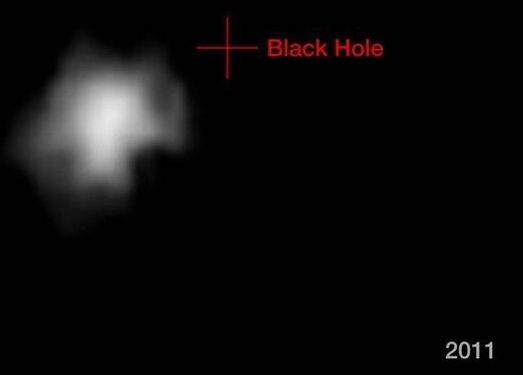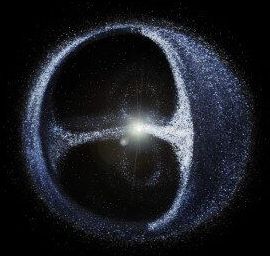Jun 21, 2021
Indiana Jones in space: Inside the fascinating world of galactic archaeology
Posted by Atanas Atanasov in categories: physics, space
Astrophysicists now have the data and models to uncover subtle imprints from our galaxy’s past.
Astrophysicists now have the data and models to uncover subtle imprints from our galaxy’s past.
Signals can be amplified by an optimum amount of noise, but this so-called stochastic resonance is a rather fragile phenomenon. Researchers at AMOLF were the first to investigate the role of memory for this phenomenon in an oil-filled optical microcavity. The effects of slow non-linearity (i.e. memory) on stochastic resonance were never considered before, but these experiments suggest that stochastic resonance becomes robust to variations in the signal frequency when systems have memory. This has implications in many fields of physics and energy technology. In particular, the scientists numerically show that introducing slow non-linearity in a mechanical oscillator harvesting energy from noise can increase its efficiency by tenfold. They published their findings in Physical Review Letters on May 27th.
It is not easy to concentrate on a difficult task when two people are having a loud discussion right next to you. However, complete silence is often not the best alternative. Whether it is some soft music, remote traffic noise or the hum of people chatting in the distance, for many people, an optimum amount of noise enables them to concentrate better. “This is the human equivalent of stochastic resonance,” says AMOLF group leader Said Rodriguez. “In our scientific labs stochastic resonance happens in non-linear systems that are bistable. This means that, for a given input, the output can switch between two possible values. When the input is a periodic signal, the response of a non-linear system can be amplified by an optimum amount of noise using the stochastic resonance condition.”
The aurora borealis is one of nature’s greatest wonders.
A new study reveals the peculiar physics behind the beautiful light displays of the aurora borealis.
About five years ago, Areg Danagoulian, associate professor in the MIT Department of Nuclear Science and Engineering (NSE), became intrigued by a technique developed by researchers at Los Alamos National Laboratory that uses a neutron beam to identify unknown materials.
“They could look into a black box containing uranium and say what kind and how much,” says Danagoulian, who directs MIT’s Laboratory of Applied Nuclear Physics (LANPh). “I was thinking about the problem of verifying nuclear material in warheads, and it just dawned on me, this amazing technology could be applied to what we’re working on.”
But there was a problem: This method, called neutron resonance transmission analysis (NRTA), requires an enormous, expensive apparatus, limiting its utility for the kind of on-site nuclear material applications Danagoulian and his research colleagues focus on. To leapfrog this obstacle, they determined to make NRTA technology portable.
At the heart of almost every sufficiently massive galaxy there is a black hole whose gravitational field, although very intense, affects only a small region around the center of the galaxy. Even though these objects are thousands of millions of times smaller than their host galaxies, our current view is that the Universe can be understood only if the evolution of galaxies is regulated by the activity of these black holes, because without them the observed properties of the galaxies cannot be explained.
Theoretical predictions suggest that as these black holes grow they generate sufficient energy to heat up and drive out the gas within galaxies to great distances. Observing and describing the mechanism by which this energy interacts with galaxies and modifies their evolution is therefore a basic question in present day Astrophysics.
With this aim in mind, a study led by Ignacio Martín Navarro, a researcher at the Instituto de Astrofísica de Canarias (IAC), has gone a step further and has tried to see whether the matter and energy emitted from around these black holes can alter the evolution, not only of the host galaxy, but also of the satellite galaxies around it, at even greater distances. To do this, the team has used the Sloan Digital Sky Survey, which allowed them to analyze the properties of the galaxies in thousands of groups and clusters. The conclusions of this study, started during Navarro’s stay at the Max Planck Institute for Astrophysics, are published today in Nature magazine.
A Penn State scientist studying crystal structures has developed a new mathematical formula that may solve a decades-old problem in understanding spacetime, the fabric of the universe proposed in Einstein’s theories of relativity.
“Relativity tells us space and time can mix to form a single entity called spacetime, which is four-dimensional: three space-axes and one time-axis,” said Venkatraman Gopalan, professor of materials science and engineering and physics at Penn State. “However, something about the time-axis sticks out like sore thumb.”
For calculations to work within relativity, scientists must insert a negative sign on time values that they do not have to place on space values. Physicists have learned to work with the negative values, but it means that spacetime cannot be dealt with using traditional Euclidean geometry and instead must be viewed with the more complex hyperbolic geometry.

A ball of gas around the Milky Way’s black hole has sparked a new debate. Could it be a massive puff of dark matter?
The orbit of S2 and its stellar companions indicated that they were circling around a massive object, about 4 million times the mass of the Sun. Although astronomers could not directly see the object, they knew it could only be one thing.
Continue reading “Scientists debate the existence of the Milky Ways supermassive black hole” »
When a massive star dies, first there is a supernova explosion. Then, what’s left over becomes either a black hole or a neutron star.
That neutron star is the densest celestial body that astronomers can observe, with a mass about 1.4 times the size of the sun. However, there is still little known about these impressive objects. Now, a Florida State University researcher has published a piece[1] in Physical Review Letters arguing that new measurements related to the neutron skin of a lead nucleus may require scientists to rethink theories regarding the overall size of neutron stars.

A team of Leiden astronomers has managed to calculate the first 100 million years of the history of the Oort cloud in its entirety. Until now, only parts of the history had been studied separately. The cloud, with roughly 100 billion comet-like objects, forms an enormous shell at the edge of our solar system. The astronomers will soon publish their comprehensive simulation and its consequences in the journal Astronomy & Astrophysics.
The Oort cloud was discovered in 1950 by the Dutch astronomer Jan Hendrik Oort to explain why there continue to be new comets with elongated orbits in our solar system. The cloud, which starts at more than 3000 times the distance between the Earth and the Sun, should not be confused with the Kuiper belt. This is the rim of rock, grains and ice in which the dwarf planet Pluto is located and which orbits relatively close to the Sun at about 30 to 50 times the Earth-Sun distance.
Like all metals, silver, copper, and gold are conductors. Electrons flow across them, carrying heat and electricity. While gold is a good conductor under any conditions, some materials have the property of behaving like metal conductors only if temperatures are high enough; at low temperatures, they act like insulators and do not do a good job of carrying electricity. In other words, these unusual materials go from acting like a chunk of gold to acting like a piece of wood as temperatures are lowered. Physicists have developed theories to explain this so-called metal-insulator transition, but the mechanisms behind the transitions are not always clear.
“In some cases, it is not easy to predict whether a material is a metal or an insulator,” explains Caltech visiting associate Yejun Feng of the Okinawa Institute for Science and Technology Graduate University. “Metals are always good conductors no matter what, but some other so-called apparent metals are insulators for reasons that are not well understood.” Feng has puzzled over this question for at least five years; others on his team, such as collaborator David Mandrus at the University of Tennessee, have thought about the problem for more than two decades.
Now, a new study from Feng and colleagues, published in Nature Communications, offers the cleanest experimental proof yet of a metal-insulator transition theory proposed 70 years ago by physicist John Slater. According to that theory, magnetism, which results when the so-called “spins” of electrons in a material are organized in an orderly fashion, can solely drive the metal-insulator transition; in other previous experiments, changes in the lattice structure of a material or electron interactions based on their charges have been deemed responsible.